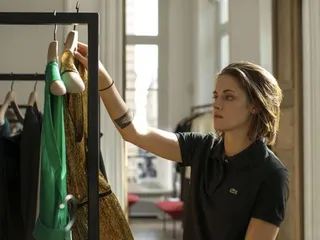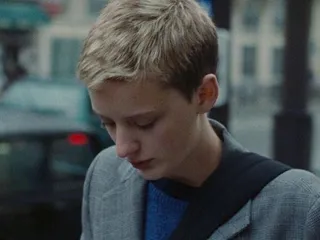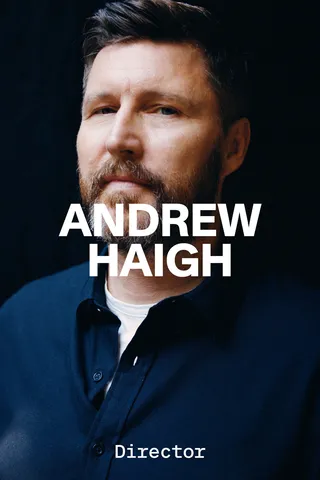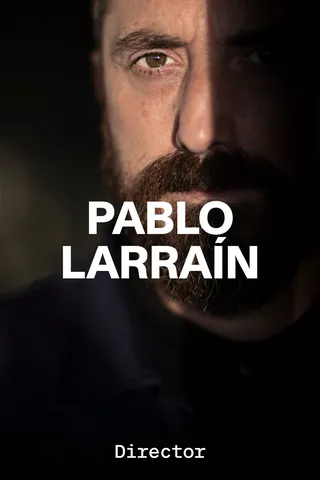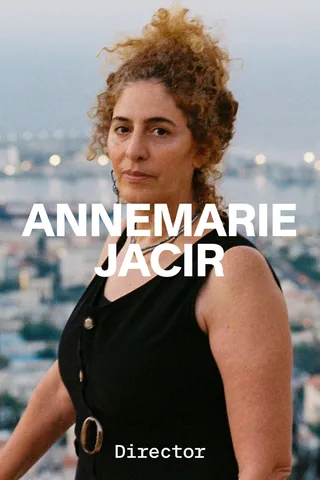Kim Gordon
Whether enlisting pals Chloë Sevigny and Sofia Coppola to pitch in on her ’90s fashion label X-girl, shooting music videos with directors Tamra Davis, Spike Jonze and Harmony Korine, or acting in films by Gus Van Sant and Todd Haynes, Kim Gordon has always had close ties to independent cinema. Mirroring her own audio, visual art and personal style, Gordon’s curated movie mixtape for Galerie shows razor-sharp taste, with a special fondness for provocative statements by European art-house directors. Her former band Sonic Youth scored the Olivier Assayas film Demonlover (2002) and she later acted in the director’s Boarding Gate (2007), so naturally Assayas titles appear on Gordon’s list: the backstage psycho-puzzle Clouds of Sils Maria (2014) and the offbeat ghost story Personal Shopper (2016). Another uncompromising Gallic director, Claire Denis, is represented by her meditation on French colonial Africa White Material (2009) and the neo-noir thriller Bastards (2013). Resonant sound design, social revolution and strong female characters are recurring motifs, from Lynne Ramsay’s narcotic road trip Morvern Callar (2002) to Göran Hugo Olsson’s incendiary collage documentary The Black Power Mixtape 1967–1975 (2011).
my FILM LIST
Click each title to discover our curator’s notes and where to watch
Model Shop is one of the best films in which Los Angeles is one of the characters. Made in 1969, it shows aspects of L.A. I’d never seen before onscreen, like how the small, impossible house the protagonist lives in with his girlfriend in Venice is right next to an active oil derrick. The shots of driving down Sunset have that smudged sunlight that you see only in Los Angeles. Mid-afternoon sun through the haze. It’s a banal scene that Demy, as a French director, made sexy. He also takes the male gaze and weaves it into the plot.
{{ All Items }}I saw this movie several years ago at the Locarno Film Festival with my close friend Rachel Kushner. We laughed till we cried. There were maybe five other people in the small theater. This is a film that not only could never be made now, but no one would even show it for being so far off of wokeness. Being brought into 1974 in this way was like visiting another world. Our mouths were open most of the time.
Of course a nefarious real estate scheme is the impetus for the whole plot. A man has a scheme to acquire property owned by a wealthy widow to build a resort by the sea by marrying her intellectually disabled, preverbal, sex-obsessed teenage daughter. It’s very camp, which keeps it from being totally exploitative.
{{ All Items }}This film is seemingly so simple but reveals so much socioeconomically about a Black community based around a family with a matriarchal structure. It tells a story that is universal but with a window into Black life in Los Angeles that is not hyperbolic or riddled with clichés. I felt like I was let into a world that I otherwise had no access to, growing up in the ’70s in a white middle-class neighborhood in Los Angeles.
{{ All Items }}I love the way Lynne Ramsay uses sound dynamics. In this movie the music is like another character. The mixtape that her dead boyfriend made and left for her (saying, “Keep the music for yourself”) becomes a thread throughout the film. He is the music—it not only keeps him alive for her but replaces him.
As in all her films, Catherine Breillat explores the duality between desire and control. It’s also a deconstruction of the relationships between the actors, the director and the audience—with us viewers as voyeurs. The film centers around a sex scene between two actors who hate each other. The controlling director positions the young actress for the big scene in such a way as to show both her desire and her wanting to keep control. I love the writing and dialogue in this movie. It’s satire but also reveals so much about how we watch movies and what our expectations are for a sex scene.
{{ All Items }}A period melodrama. When I first saw this movie I laughed so much. The exaggeration of everything, from the saturation of color to the entwinement of the lovers’ bodies, always so entangled, depicting passion and female sensuality and abandon to a ridiculous degree. I had the pleasure of meeting Catherine, and we talked about painting. She said she considered herself a painter more than a filmmaker—she loved the process of color-adjusting—and spoke of her love of Renaissance painters and their use of red. I read an interview where she said she liked to paint the blood herself in this film, doing what she’s always done as an artist.
{{ All Items }}This film has a tragedy at its center, but you don’t know it till halfway through. The first part shows the Grégoire character as a charming father, playful with his children if constantly distracted by his work but still trying to juggle everything. He’s a film producer in enormous debt.
The second half of the film centers on his wife, who steps in and takes over after he kills himself. She is devastated but carries on in a remarkable way. I like how unsentimental it is in its depiction of this enormous loss.
{{ All Items }}From the very beginning there is this incredible tension that sustains throughout the film. It comes from what’s hidden and then revealed so casually. Like the quiet of a bedroom and the sudden appearance of two children armed with spears, stealing the “white material” (jewelry, etc.) from colonizers who own a coffee bean plantation. The landscape is captured so beautifully as these different factions—child armies, rebels and the French army—sift through it. It’s difficult to tell who is more brutal, the rebels or the army. It doesn’t seem to matter who is righteous: It’s all in motion and imploding, changing. The character played by Isabelle Huppert, one of the plantation owners, doesn’t want to leave and give up the land she’s grown to love. She would rather die doing what she’s always done.
{{ All Items }}In this South Korean film about the class divide, it was interesting to see the upper-class family be so enthralled with the Western world. It’s what modern-day luxury looks like. The little girl is surrounded by Caucasian-looking dolls—not one is Asian. Champagne is the go-to drink, along with expensive wine. The male protagonist plays classical music on the piano every morning. By the end of the film, they’re speaking in English. The beginning was predictable, but the end was surprising.
{{ All Items }}This film utilizes 16mm footage of the Black Power movement in America, shot by Swedish journalists between 1967 and 1975. It’s incredible to watch and relate to the present day, a connection that’s emphasized by the use of observations, reactions and voice-over snippets from contemporary musicians and others. It’s wild to realize how little has changed. Particularly alarming is the Swedish tour bus going through Harlem. A great film!
{{ All Items }}When I first saw this film at the New York Film Festival, I thought it was one of the most devastatingly brutal films I’d ever seen. But I also thought it was beautiful. On second viewing I could really enjoy how gorgeously filmed it was. The dark, muted colors match the mystery of it. All Claire Denis’s films have so much that is mysterious and unspoken, but this one really lives in the dark. The way she used sound recorded from actual situations, like the smashed car going by on a truck bed when the camera stays on it and we hear the noise of the metal and wind combined for a good 30 seconds or so. It folds so well into the rest of the soundtrack.
{{ All Items }}The relationship in this movie between the two main characters, Maria and Valentine, is so multifaceted. When Jo-Ann enters the picture she brings another meta aspect to the whole thing. The relationship dynamics keep changing, along with the play that Maria is rehearsing and her attitude. There’s also an underlying tension throughout that the landscape brings. I like when Val is driving along the curving mountain road, listening to a song by Primal Scream, and it suddenly turns into a sort of overlayed collage of images mimicking a music video, portraying her nausea. Is it from the curving road or her relationship to Maria?
{{ All Items }}I loved this movie so much. I was really touched by the strong bond between these sisters in their seemingly hopeless situation. Their life changed in an afternoon, after what would be regarded in Western culture as a totally normal, joyful expression of freedom: romping in the ocean after school with neighborhood boys. But for young girls living in a small Turkish village with a conservative uncle, the only solution he finds is to lock them in the house and marry them off as soon as possible. Childhood is over. There is very little scripted dialogue in the film but so much communication between them, as they are so close as siblings. It really made me angry.
{{ All Items }}Kristen Stewart carries this whole film pretty much herself. The texting scene on the train is incredible in the suspense it builds. I also love how Olivier doesn’t use typical music from the horror genre but instead relies on sounds, like how exaggeratedly loud the creaking stairs are in the house where Maureen spends the night while waiting for a sign from her brother’s spirit from the beyond. Also, it’s funny to have someone be a self-proclaimed medium but unsure about anything she’s receiving.
{{ All Items }}
“The music is like another character.”
RELATED MATERIAL
Essays, interviews and other connections
![The White Lady of Africa]() The White Lady of Africaread
The White Lady of AfricareadOut of Africa and White Material traverse the same colonial territory in wildly different manners
By Hermione Hoby
![Inferiority Complex]() Inferiority Complexread
Inferiority ComplexreadFrom All About Eve to Tár, the ambiguities and temptations of being an assistant
By Katya Apekina
![Crying With Mia]() Crying With Miaread
Crying With MiareadThe profound effect of director Mia Hansen-Løve’s anti-manipulative cinema
By Lisa Rovner

